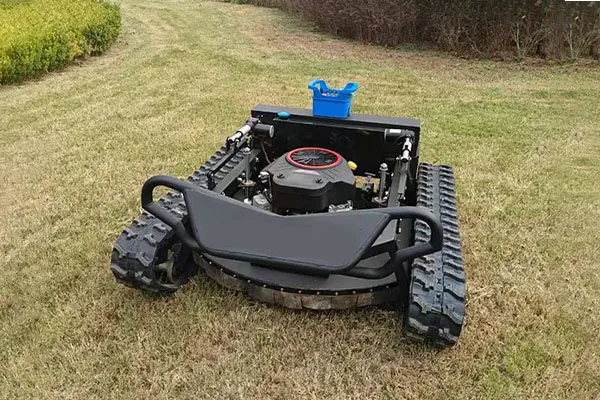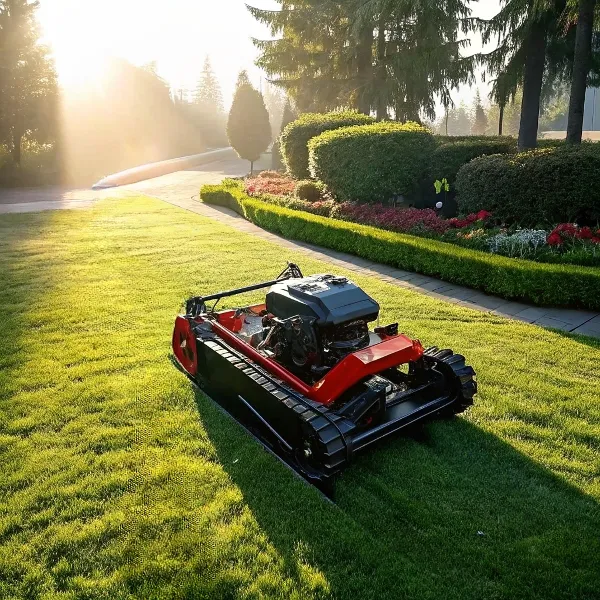Avoid your inquiry is delay response, please enter your WhatsApp/Skype along with the message, so we can contact you at the very first time.
We will reply you within 24 hours. If for urgent case, please add WhatsApp/WeChat: +8613791936882 ,. Or call +86-18678911083 directly.
Sick of spending hours mowing the lawn every week?
A robot lawn mower handles the work for you, saving time, reducing effort, and keeping your grass evenly trimmed with minimal electricity use.

When I first started exploring smart garden tools, the robot lawn mower stood out. I’ve tested, sold, and supported hundreds of models. The one question I always get from customers is: is it really worth it? Let’s break it down from power usage to rainy-day performance.
If you’re switching from gas or manual mowing, energy cost might be your first concern.
Robot mowers are energy-efficient and use very little electricity—on average, less than 20 kWh per month depending on lawn size and model.
One of the biggest benefits of robot lawn mowers is their low energy cost. They run on rechargeable lithium-ion batteries and draw power from a charging station that plugs into a standard outlet. Let’s put that into perspective.
Most robot mowers use between 15 to 25 kWh per month. To compare, that’s about the same as running a small household appliance, like a fan. Even larger models designed for commercial lawns won’t exceed 35 kWh/month.
| Lawn Size | Monthly Usage | Estimated Cost (USD) |
|---|---|---|
| Small (<500㎡) | 10–15 kWh | $1.50–$2.00 |
| Medium (500–1000㎡) | 15–25 kWh | $2.00–$3.50 |
| Large (>1000㎡) | 25–35 kWh | $3.50–$5.00 |
Most robot mowers return to their charging station automatically. They charge slowly and steadily, which extends battery life and reduces power surges. Energy use is even lower if the mower has smart scheduling and rain sensors that stop mowing when it’s not needed.
Unlike gas mowers, robot mowers don’t waste energy idling. They only use power when cutting. That means you’re not just saving time—you’re also keeping electricity bills low while maintaining a perfect lawn.
For anyone concerned about long-term operating costs, the robot mower is one of the most efficient tools you can use outdoors.
You wake up, it rained last night—can the robot mower still run?
Most robot mowers can cut wet grass, but it’s not recommended for best results. Wet conditions may affect cut quality and mower traction.

I’ve seen robot mowers running in every kind of weather. While many models are waterproof or weather-resistant, there are some important things to know about how they perform in wet grass.
Wet grass reduces traction. Robot mowers can slip, especially on slopes. This may cause uneven patterns or repeated mowing in the same spot. If your lawn has soft soil or heavy grass, the wheels may also leave tracks.
Wet grass clumps together. This leads to uneven cutting1, clogging, or bunching under the mower deck2. It won’t damage the machine, but the final look might not be as clean.
Mowing wet grass can dull blades faster. When the grass is wet, more resistance is created. Dirt and moisture stick to the blades, which affects long-term performance.
| Factor | Effect on Wet Grass |
|---|---|
| Traction | Reduced on slopes or soft soil |
| Cut Appearance | Less clean, possible clumping |
| Blade Wear | Higher due to moisture resistance |
Many models come with rain sensors3 that delay mowing when it’s too wet. If yours doesn’t, you can set the mower to skip a cycle or manually pause it after a downpour. Waiting a few hours until the lawn dries out is usually best.
There’s no bag, no clippings to collect—so where does the grass go?
Robot lawn mowers mulch the grass into tiny clippings, which fall back into the soil and act as a natural fertilizer.

Robot mowers don’t just cut your lawn—they improve it. Instead of collecting grass like traditional mowers, they mulch it. Here’s how that works and why it’s a benefit, not a problem.
Since robot mowers run frequently, they only cut a few millimeters at a time. The grass clippings are so small they fall deep into the turf and disappear. You never see them, and there’s no mess to clean up.
The clippings break down quickly and return nutrients to the soil. This supports a healthier lawn by reducing the need for synthetic fertilizer. It’s better for your garden, and better for the environment.
With no collection bag, there’s nothing to empty or dump. This makes the robot mower truly automatic—set it, forget it. There’s also less odor and fewer piles of waste to manage.
| Benefit | Description |
|---|---|
| No Cleanup | Clippings stay on the lawn |
| Soil Nutrition | Natural mulch improves grass health |
| Time-Saving | No need to rake or bag clippings |
| Eco-Friendly | Reduces fertilizer and waste use |
For customers like Sophia who value clean garden presentation and low maintenance, the mulching system is one of the top reasons they switch to robot mowers. It’s efficient, invisible, and helps the lawn grow stronger over time.
Robot lawn mowers use little power, need almost no cleanup, and keep your lawn tidy—making them a smart, time-saving investment for both home and commercial gardens.
Understanding the causes of uneven cutting can help you achieve a cleaner lawn finish. Explore this link for expert insights. ↩
Learn how to address bunching under the mower deck for a better mowing experience. This link offers practical solutions. ↩
Learn how rain sensors can protect your mower and improve lawn care by preventing mowing in wet conditions. ↩